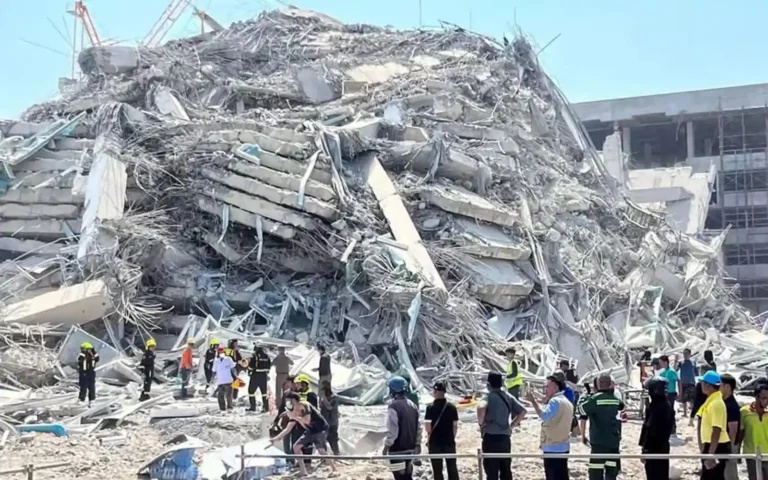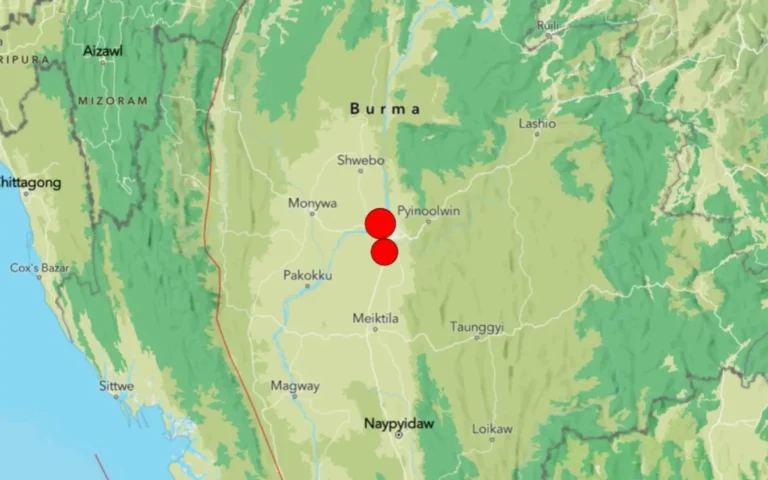
📜 Introduction
Myanmar, a country located in Southeast Asia, is known for its rich culture, historical temples, and diverse landscapes. However, the region is also highly susceptible to natural disasters, particularly earthquakes. The recent March 28, 2025, earthquake is a stark reminder of the country’s seismic vulnerabilities. In this blog, we delve deeper into the causes of this earthquake, its impact on Myanmar, past seismic activities, and preparedness measures.
🌍 The March 28, 2025, Myanmar Earthquake: A Detailed Overview
On March 28, 2025, Myanmar experienced one of its strongest earthquakes in recent years. The 7.7 magnitude quake originated from the Sagaing Fault, a major seismic zone in Myanmar.
Key Details of the Earthquake:
- Date: March 28, 2025
- Magnitude: 7.7
- Epicenter: Sagaing Region, Myanmar
- Depth: 70 km
- Duration: The tremors lasted approximately 90 seconds
- Impact Areas: Myanmar, parts of Thailand, Bangladesh, and India
- Cause: Movement along the Sagaing Fault due to tectonic stress buildup
Damage and Casualties
The strong tremors led to widespread destruction, with several buildings collapsing in Mandalay, Naypyidaw, and Yangon. Reports indicate:
- Over 150 deaths and more than 500 injuries
- Severe infrastructure damage, including residential buildings, temples, and bridges
- Power outages and disruptions in transportation services
- Landslides in hilly areas, further worsening the damage

🌋 The Sagaing Fault: Myanmar’s Most Active Seismic Zone
Myanmar sits on one of the world’s most active tectonic zones. The Sagaing Fault runs north to south through the country and is responsible for frequent earthquakes.
Why Does Myanmar Experience Earthquakes?
The Indian Plate is pushing against the Eurasian Plate, creating immense geological stress
The Sagaing Fault accommodates this pressure, leading to frequent tremors
The fault moves at a rate of 18-20 mm per year, making it one of Asia’s most dangerous seismic zones

📅 Historical Earthquakes in Myanmar
Myanmar has a long history of destructive earthquakes. Some of the most significant include:
The 2016 Chauk Earthquake (Magnitude 6.8)
Occurred on August 24, 2016, with an epicenter near Chauk, Magway Region.
Caused significant damage to over 200 ancient temples in Bagan.
Tremors were felt in Bangladesh, Thailand, and India.
The 2012 Thabeikkyin Earthquake (Magnitude 6.8)
Struck on November 11, 2012, with an epicenter near Thabeikkyin, Mandalay Region.
Triggered multiple landslides, collapsing bridges and buildings.
Over 26 fatalities and hundreds injured.
The 1930 Bago Earthquake (Magnitude 7.3)
Occurred on May 5, 1930, with its epicenter near Bago, southern Myanmar.
One of Myanmar’s deadliest earthquakes, killing over 500 people.
Caused massive infrastructure damage, particularly in Yangon (Rangoon at the time).
The 1929 Mawlaik Earthquake (Magnitude 7.0)
Struck on September 6, 1929, in Mawlaik, northern Myanmar.
Affected remote areas but caused widespread structural damage.
The 1912 Maymyo Earthquake (Magnitude 7.7)
Occurred on December 23, 1912, near Maymyo (now Pyin Oo Lwin).
One of the most powerful recorded earthquakes in Myanmar’s history.
Resulted in extensive destruction across Mandalay and surrounding regions.
💰 Impact on Society and Economy
The aftermath of the March 28, 2025, earthquake has caused significant disruption:
Economic Losses: Estimated damages exceed $1 billion
Infrastructure Challenges: Rebuilding homes, roads, and public facilities will take years
Psychological Impact: Survivors face trauma, displacement, and loss of livelihood

🛠 How to Prepare for Earthquakes in Myanmar
Given Myanmar’s high seismic risk, preparedness is crucial. Here are some key measures:
1. Strengthening Buildings
Implement earthquake-resistant designs for new constructions
Retrofitting older structures to withstand seismic activity
2. Public Awareness and Drills
Conduct regular earthquake drills in schools and workplaces
Educate people on evacuation routes and emergency procedures
3. Emergency Kits and Response Plans
Every household should have an emergency kit with food, water, and medical supplies
Establish communication plans for families during disasters
4. Government and International Support
Increase funding for earthquake research and early warning systems
Collaborate with neighboring countries for disaster response coordination
🔭 Looking Ahead: The Future of Earthquake Preparedness in Myanmar
The recent earthquake underscores the urgent need for better preparedness. By investing in earthquake-resistant infrastructure, public education, and early warning systems, Myanmar can mitigate the effects of future seismic events.
For official updates on seismic activity, visit the Department of Meteorology and Hydrology (DMH), Myanmar: view
💡 Final Thoughts
While Myanmar cannot prevent earthquakes, it can reduce casualties and economic losses through effective planning and preparedness. Awareness, strong policies, and international cooperation will be key in ensuring the country’s resilience against future earthquakes.
For scientific earthquake data, check the United States Geological Survey (USGS): view
Related Articles:
The Science Behind Earthquakes: Understanding Seismic Movements
Rebuilding Myanmar: Strategies for Post-Earthquake Recovery
By taking proactive steps today, Myanmar can build a safer future for its people. Stay informed, stay prepared, and stay safe!
One Comment
[…] Kyushu Recent Earthquake come, It is located in one of the most seismically active regions on Earth, frequently experiences […]